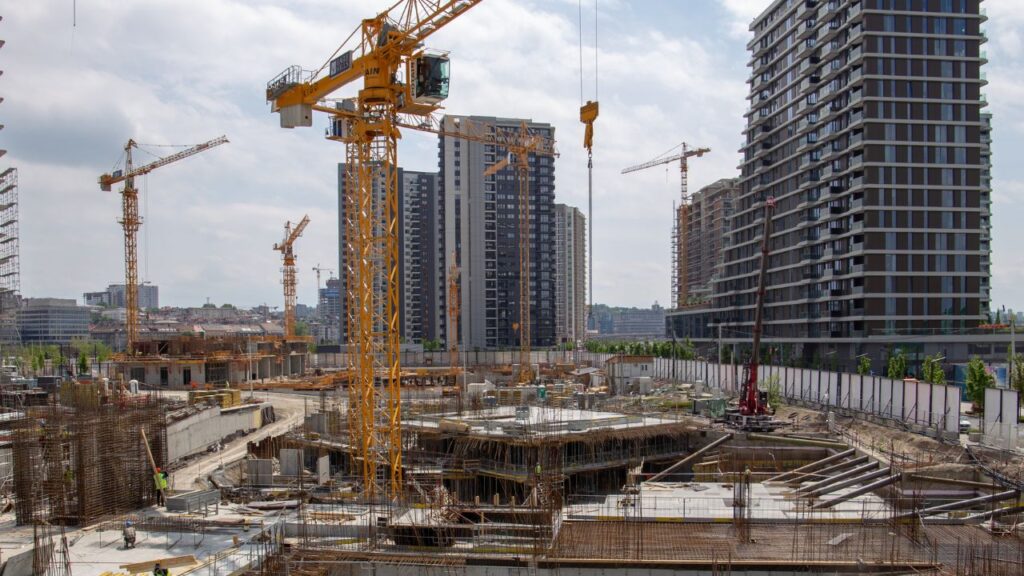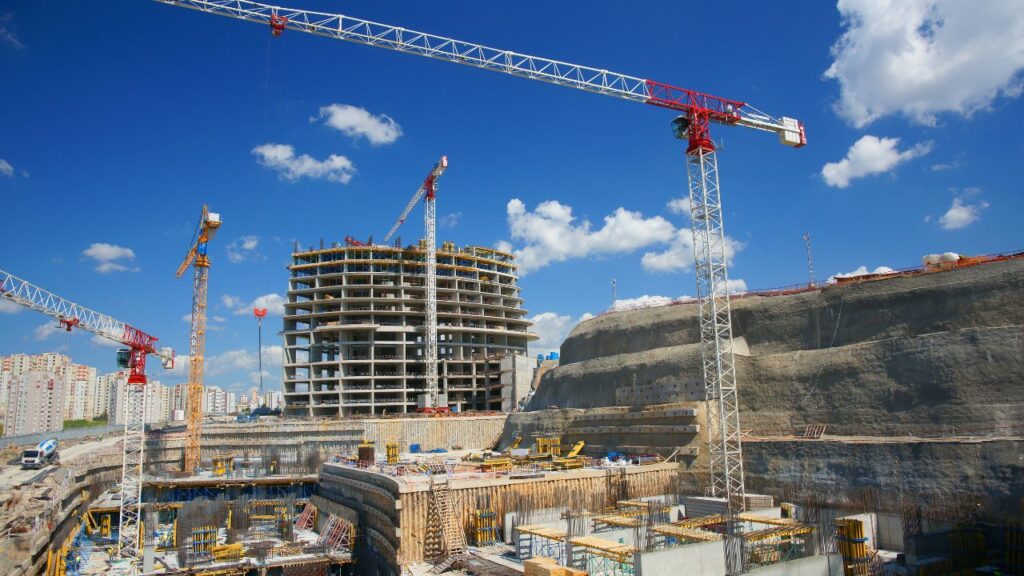Boost Your Construction Bids – Request a Precision Estimate!
- Accurancy
- Efficiency
- Transparency
- Customization
- Time Saving
- Professionalism
- Cost Control

At the inception of any construction endeavor, a comprehensive planning phase sets the tone for success, and nestled within this crucial phase is the intricate process of construction takeoff. Often referred to as material takeoffs (MTO), quantity takeoffs (QTO), or simply “takeoffs,” this meticulous procedure involves a detailed measurement of the materials and labor indispensable for the realization of a construction project. As an indispensable component of the pre-construction phase, the construction takeoff serves as the compass guiding project managers, estimators, and stakeholders through the complexities of material procurement and labor allocation. This guide is tailored to be your companion through the fundamental steps necessary for executing accurate and efficient construction takeoffs, providing you with the tools to establish a resilient foundation for the triumph of your construction project.
Embarking on the construction takeoff journey begins with a deep dive into the intricate world of construction plans and blueprints. These documents serve as the musical score of your construction project, outlining every nuance and detail. Thoroughly scrutinize the plans, paying attention to the project scope, design intricacies, and specifications. Understand the language of symbols, scales, and annotations that gracefully dance across the pages, revealing the diverse materials and components that will shape the final masterpiece.

This initial analysis sets the tone for the entire takeoff process, ensuring that every note, or in this case, every measurement, is understood and accounted for.
Once the symphony of plans has been meticulously studied, the next step is to organize the information in a manner akin to composing a well-structured musical piece. Imagine creating a checklist that mirrors the sections of an orchestra, each trade represented as a distinct instrument. Concrete, framing, electrical, plumbing – these become the notes on your checklist, forming a systematic approach that guides the entire takeoff process. This organization isn’t just about efficiency; it’s about creating a harmonious rhythm in your workflow, ensuring that no element is overlooked or misplaced. As you categorize and sequence the materials, you’re setting the stage for a symphony of precision and accuracy in your construction takeoff.

Make Informed Design Decisions Showcase Your Design Ideas
Get RenderingWith plans in hand and a well-organized checklist as your guide, the construction takeoff process unfolds with the delicate yet crucial step of measurements. Picture this as the brushstroke that lays the foundation for the entire artistic endeavor. Whether you opt for traditional measuring methods or embrace the efficiency of digital takeoff tools, the emphasis is on accuracy. Every dimension, every quantity must be captured with precision. The success of the entire construction project hinges on these measurements, making it imperative to double-check and cross-verify your calculations. In this phase, you’re not just quantifying materials; you’re sculpting the raw data into the precise elements that will bring the architectural vision to life.
As the construction industry embraces the digital era, takeoff software emerges as a powerful symphony conductor, orchestrating a harmonious collaboration between artistry and technology. These sophisticated tools, akin to having a skilled accompanist by your side, offer a plethora of advantages. They facilitate faster, more accurate, and organized takeoffs. Integration with design software further reduces the likelihood of errors, creating a seamless flow of information. The digital platform these tools provide becomes a canvas where precision meets innovation, elevating the entire takeoff process to new heights. Embracing takeoff software isn’t just about efficiency; it’s about infusing a technological cadence into the artistic rhythm of construction planning.
With measurements in hand and the aid of advanced takeoff software, the next movement in this symphony of construction takeoff is the quantification of materials. Imagine this as the composer weaving together individual notes into a rich tapestry of sound. Every material, from the sturdy foundations of concrete to the intricate wiring of electrical systems, demands quantification. Keep a meticulous running tally for each material type and trade, ensuring that no element is overlooked or underestimated. In this stage, you’re not merely dealing with quantities; you’re crafting a detailed narrative that encapsulates the essence of the project.

The quantification process transforms abstract plans into tangible elements, setting the stage for the construction performance that lies ahead.
In the intricate dance of construction, where raw materials meet skilled craftsmanship, the inclusion of labor hours in a comprehensive takeoff is akin to bringing the project to life. Beyond the cold calculations of materials lies the human element—the artisans and workers who transform plans into reality. This step involves a meticulous analysis of the construction plans, identifying tasks that are not only material-intensive but also reliant on the skill and expertise of the labor force. It’s a nuanced process of deciphering the plans to understand the intricacies of each labor-intensive activity. As you delve into this phase of the takeoff, imagine yourself as a conductor interpreting a musical composition. You must calculate the time required for each note, each movement, considering factors such as the skill levels of the performers, the complexity of the project, and any potential challenges that may influence productivity. The result is a takeoff that transcends the realm of materials and becomes a symphony of human effort, recognizing the vital role that skilled labor plays in the construction narrative.

Just as a conductor guides a symphony to achieve harmony and precision, factoring in productivity rates is the nuanced art of harmonizing efficiency and precision in the construction takeoff. This step is about acknowledging that not all labor hours are created equal and that the efficiency of labor varies under specific conditions. Productivity rates become the tempo of the construction symphony, setting the rhythm for each labor-intensive task. Applying these rates to your labor calculations requires a careful consideration of historical data, industry benchmarks, and any project-specific variables that may impact labor productivity. It’s a dynamic process that involves interpreting the intricacies of labor efficiency, ensuring that your construction project moves forward with a well-calibrated rhythm. The result is a takeoff that not only accounts for the quantity of labor but also for the quality and efficiency that skilled workers bring to the construction site. In essence, this step transforms your takeoff from a mere list of tasks into a dynamic score that encapsulates the synergy of human effort within the construction symphony.
As your construction takeoff journey approaches its final movement, the stage is set for a thorough review and cross-verification. Imagine this step as the conductor meticulously going through each section of the orchestra score, ensuring that every note, every measurement, and every calculation is in perfect harmony. It’s a critical moment to cross-verify your measurements and quantities, leaving no room for discrepancies. This meticulous review serves as a safeguard, acting as a sentinel against potentially costly errors that might try to sneak into the construction process. Embrace this opportunity to fine-tune the precision of your takeoff, creating a symphony of accuracy that resonates throughout the entire construction project.
In the realm of construction, collaboration is the art of crafting a collective masterpiece. As you finalize your takeoff, extend an invitation to a diverse ensemble of stakeholders, including architects, engineers, and subcontractors. Each member of this collaborative orchestra brings a unique instrument – be it design finesse, structural expertise, or on-the-field knowledge. Their insights become the checks and balances that elevate your takeoff, ensuring it aligns seamlessly with the overarching vision and requirements of the project. Embrace this collaborative spirit as a maestro would conduct an ensemble, and your takeoff will

be a harmonious composition of collective wisdom and expertise, setting the stage for a construction symphony that resounds with success.
As your construction takeoff nears its conclusion, the time has come to compile the symphony of data into a comprehensive manuscript – the detailed reports. Picture this phase as the skilled scribe meticulously transcribing every musical note onto the pages of a timeless score. These reports should not merely be documents; they should be eloquent narratives that unfold the story of your construction project. Provide a clear breakdown of materials, quantities, labor hours, and associated costs, each element contributing to the narrative of your project’s requirements. Utilize standardized formats as the grammatical rules that enhance clarity and coherence in your manuscript. These detailed reports serve as the authoritative reference, ensuring that every stakeholder can read and interpret the construction story with precision.
Receive highly accurate estimates tailored to your zip code, giving you the edge to secure more projects. Upload your plans and start winning!
With your construction manuscript in hand, it’s time for the grand performance – presenting the takeoff. Envision this moment as the conductor stepping onto the podium, ready to unveil the symphony to an eager audience. As you present the takeoff, clarity becomes your baton, conducting the orchestra of information. Clearly communicate the assumptions, methodologies, and any areas of uncertainty, laying the groundwork for transparency that fosters trust among project stakeholders. This is your moment to provide a comprehensive overview, inviting everyone into the construction narrative you’ve meticulously crafted. Be prepared to address questions or concerns as a conductor would navigate through intricate musical passages, ensuring that the grand performance unfolds seamlessly, setting the stage for the construction project’s success.
Engaging in construction takeoffs is akin to embarking on a dynamic journey where each project serves as a unique chapter in the book of experience. Learning and adaptation are the compass points that guide you through this ever-evolving landscape. With the culmination of each project, reflect on the challenges faced, victories celebrated, and lessons learned. Consider this reflection as the cornerstone for continuous improvement. Identify areas that warrant refinement and adapt your methodologies accordingly, sculpting them into sharper tools for future endeavors. Embrace the technological symphony playing in the background, staying attuned to the latest advancements that can elevate your takeoff skills. Like a seasoned traveler navigating uncharted territories, approach each new project with the wisdom gained from past journeys. The dynamic evolution of construction takeoffs becomes not just a professional endeavor but a personal odyssey of growth and mastery.
A construction takeoff, also known as material takeoff (MTO) or quantity takeoff (QTO), is a detailed measurement of materials and labor required for a construction project. It serves as a critical component in the pre-construction phase, guiding project managers and stakeholders through the complexities of material procurement and labor allocation.
A construction takeoff is essential because it provides a detailed understanding of the materials and labor needed for a project, forming the basis for accurate cost estimation, project planning, and resource allocation. It helps in avoiding unforeseen challenges and ensures the project’s success.
The key steps in performing a construction takeoff include reading and analyzing plans, organizing information, starting with measurements, utilizing takeoff software, quantifying materials, including labor hours, factoring in productivity rates, reviewing and cross-verifying, collaborating with stakeholders, creating detailed reports, presenting the takeoff, and continuously learning and adapting.
Begin a construction takeoff by thoroughly reviewing construction plans, blueprints, and relevant documents to understand the project scope. Organize the information systematically, create a checklist, and categorize materials based on trades. Proceed with precise measurements, either using digital takeoff tools or traditional methods.
Technology, particularly construction takeoff software, plays a crucial role in enhancing the efficiency and accuracy of the takeoff process. These tools facilitate faster and more organized measurements, integrate with design software to reduce errors, and provide a digital platform for collaboration among project stakeholders.
Collaboration with stakeholders, including architects, engineers, and subcontractors, is crucial as it brings diverse expertise to the construction takeoff process. Their insights serve as valuable checks and balances, ensuring that the takeoff aligns with the project’s overall vision and requirements.
Detailed reports for a construction takeoff should include a clear breakdown of materials, quantities, labor hours, and associated costs. Utilizing standardized formats enhances clarity and facilitates easy communication with other project stakeholders, providing an authoritative reference for interpreting the construction project’s requirements.
Continuous improvement in construction takeoff skills involves learning from each project, identifying areas for improvement, and adapting methodologies accordingly. Embracing technological advancements and staying informed about industry best practices contribute to enhancing takeoff skills over time.
Here I am going to share some steps to get your Takeoffs in Construction Estimating report.
You can send us your plan on info@estimatorflorida.com
Before starting your project, we send you a quote for your service. That quote will have detailed information about your project. Here you will get information about the size, difficulty, complexity and bid date when determining pricing.
Our team will takeoff and estimate your project. When we deliver you’ll receive a PDF and an Excel file of your estimate. We can also offer construction lead generation services for the jobs you’d like to pursue further.



561-530-2845
info@estimatorflorida.com
Address
5245 Wiles Rd Apt 3-102 St. Pete Beach, FL 33073 United States
561-530-2845
info@estimatorflorida.com
Address
5245 Wiles Rd Apt 3-102 St. Pete Beach, FL 33073 United States
All copyright © Reserved | Designed By V Marketing Media | Disclaimer